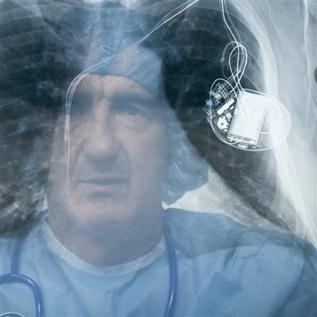Meeting Agenda: Patient Access to High-Risk Devices for Unmet Medical Needs
On Thursday, January 30, The Pew Charitable Trusts will hold an interactive conference with leading experts from FDA, the Centers for Medicare & Medicaid Services (CMS), the medical device industry, patients, consumers, private payors and other key health policy stakeholders to explore patient access to devices for unmet medical needs.
Location:
The Pew Charitable Trusts
Carolinas Room, 10th Floor
901 E Street, NW
Washington, D.C.
Meeting Goals:
- Describe the Food and Drug Administration's (FDA's) current authorities and programs to facilitate patient access to high-risk devices for serious, unmet medical needs.
- Discuss options for adjusting the balance of premarket and postmarket effectiveness data collection for products meeting unmet medical needs.
- Discuss whether and how the collection of some data on device effectiveness in the postmarket setting would impact patient safety.
- Identify mechanisms to ensure the collection of postmarket data and discuss other needed postmarket controls.
- Discuss coverage and reimbursement approaches for innovative devices.
8:30-9:00: Coffee and Light Breakfast
9:00-9:15: Welcome
Allan Coukell, Senior Director, Drugs & Medical Devices, The Pew Charitable Trusts
Audio: Opening remarks
9:15-9:45: Keynote: FDA's Authorities and Programs to Accelerate Access to Novel Devices
- What tools does FDA have to speed access to new devices for patients with few or no options?
- What new policies is FDA considering to accelerate patient access to innovative high-risk devices while ensuring safety?
- Under FDA's current authorities, can the agency rebalance premarket and postmarket data collection for innovative products that address a serious unmet need?
- Does FDA require any new authorities to facilitate patient access to novel technologies for serious unmet medical needs?
- Are FDA's authorities sufficient to ensure the collection of postmarket data if the balance of premarket and postmarket data collection on device effectiveness is adjusted?
9:45-10:45: Panel Response: Assessing the Effectiveness of Existing Efforts
Tom Fogarty, Chairman, Director and Founder, The Fogarty Institute for Innovation
David Nexon, Senior Executive Vice President, Advanced Medical Technology Association
Diana Zuckerman, President, National Research Center for Women & Families
- How effective are FDA's tools in getting innovative devices to patients with serious unmet needs more quickly while maintaining safety standards?
- Under FDA's current approach, do the benefits outweigh the risks of accelerating devices for these patients?
- Should FDA be doing more to speed access to high-risk devices for specific patients?
- If yes, how can this be done while still ensuring product safety and effectiveness?
- Are current authorities appropriate to ensure prompt patient access to devices for serious unmet medical needs that are safe and effective or is legislation needed?
Audio: Assessing the Effectiveness of Existing Efforts
10:45-11:00: Break
11:00-11:15: Presentation: Case Studies
Josh Rising, Director, Medical Devices, The Pew Charitable Trusts
These case studies will provide hypothetical examples of devices to facilitate the discussion.
11:15-12:30: Panel: Considering Devices and Data for Accelerated Approval
Jeff Allen, Executive Director, Friends of Cancer Research
Michael Mack, Director, Cardiovascular Surgery, Baylor Health Care System
Michael Morton, Vice President Global Regulatory Affairs, Medtronic, Inc.
Murray Sheldon, Associate Director for Technology, CDRH, FDA
- Are there unmet medical needs where it is appropriate to adjust the balance of premarket and postmarket effectiveness data collection to get devices to patients more quickly?
- If so, what effectiveness data could be shifted to the postmarket setting?
- How could such a pathway be implemented?
- What role does patient risk-tolerance play, and how can that best be considered?
Audio: Considering Devices and Data for Accelerated Approval
12:30-1:15: Lunch (Provided)
1:15-2:15: Panel: Post-market Monitoring for Devices Accelerated to Patients
Joseph Drozda, Director, Outcomes Research, Mercy Center for Innovative Care
Michael Mussallem, Chairman and CEO, Edwards Lifesciences
Bray Patrick-Lake, Director of Stakeholder Engagement, Clinical Trials Transformation Initiative
Kate Ryan, Senior Program Coordinator, National Women's Health Network
Nancy Stade, Deputy Director for Policy, CDRH, FDA
- How can FDA ensure prompt and sufficient collection of postmarket data for devices that are accelerated to patients?
- Will patients and providers participate in randomized, controlled trials for approved products? Is non-randomized or uncontrolled data sufficient?
- What are appropriate restrictions on the use of these devices—such as limiting their use to centers of excellence or requiring provider certifications?
- What remedies are available if the postmarketing experience shows a device does not meet either the safety or effectiveness standards?
- What is the appropriate way to convey to patients and clinicians the evidence that supports the device?
Audio: Post-market Monitoring for Devices Accelerated to Patients
2:15-3:30: Panel: Payor Coverage of Devices Accelerated to Patients
Naomi Aronson, Executive Director, Clinical Evaluation, Innovation, and Policy, Office of Clinical Affairs, Blue Cross Blue Shield Association
Louis Jacques, Director, Coverage and Analysis Group, Centers for Medicare & Medicaid Services
Mark Leahey, President and CEO, Medical Device Manufacturers Association
Pankaj Pasricha, Director, Johns Hopkins Center for Neurogastroenterology
- How do payors currently make coverage and reimbursement decisions regarding innovative devices entering the market?
- How would adjusting the premarket-postmarket balance of data collection on device effectiveness affect coverage and reimbursement decisions for devices that fill unmet medical needs?
- Are payors more willing to cover a device if it fills an unmet medical need? Should they be?
- What is the appropriate way to involve payors in FDA efforts to accelerate patient access to innovative medical devices?
Audio: Payor Coverage of Devices Accelerated to Patients
3:30-3:50: Final Questions and Answers
3:50-4:00: Wrap-up
4:00: Adjourn











